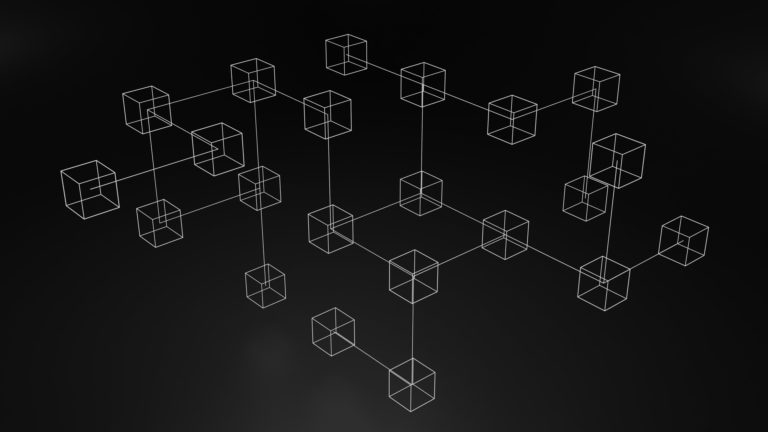The District Journal Team
The Odyssey of Global Finance: The DeFi and Blockchain Saga

Picture an ocean in the middle of a storm, the waters churning, once docile waves now towering giants. This ocean is the world of global finance, long the playground of banks and financial institutions, the unyielding behemoths of yesteryears. Yet, amidst the tempest, a new protagonist emerges, emboldened by the gusts of change: Decentralized Finance, or DeFi.
Like an intrepid mariner embarking on a voyage into uncharted waters, DeFi, powered by the scintillating energy of blockchain technology, boldly confronts the status quo. Its mission? To redraw the map of money and investment and unfurl a new course for the future of finance.
Our journey into this financial revolution is marked by a simple, yet profound, guiding star: the elimination of intermediaries. The cornerstone of this disruption is the smart contract, a blockchain-based compass that automatically navigates transactions once certain conditions are met. No need for a third-party pilot, the course is set and followed autonomously.
Take for instance, Aave and Compound, the vanguards of this paradigm shift, pioneering the reimagining of loans. Imagine a bustling marketplace in this new world where an industrious farmer in Kenya, instead of a distant, faceless bank, provides capital for a promising innovator in Estonia. This peer-to-peer lending and borrowing drive down costs, usher in transparency, and most crucially, offer financial services to those left ashore by the traditional banking system.
The DeFi revolution is not just about loans, however. Consider Synthetix, a financial artisan crafting “synthetics” – tokens that mirror the value of any asset. The fruits of its labor transform the trading landscape, allowing users to trade a cornucopia of assets – gold, stocks, and cryptocurrencies – on a single platform without a broker. It’s akin to having a bustling bazaar where traders, unhindered by intermediaries, transact freely, swiftly, and at minimal cost.
Amid the fluctuating tides of cryptocurrencies, stablecoins, like MakerDAO’s DAI, are a beacon of steadiness. Pegged to stable assets such as the US dollar, they provide a safe haven, calming the roiling seas of cryptocurrency volatility, and thus, fostering wider adoption.
And then there’s Yearn Finance, an automated harbormaster directing the flow of capital towards the most promising returns. Imagine having a seasoned financial advisor, tirelessly working round the clock to ensure your voyage reaps the best yields.
Yet, amidst the exciting voyage, treacherous shoals lurk beneath the surface. The security of smart contracts remains a pressing concern, with bugs and attacks akin to hidden rocks threatening to capsize the ship of trust. Nevertheless, fear not, for the mapmakers and sailors are hard at work charting safer routes, with research in blockchain security rapidly forging ahead.
So here we are, in the midst of an odyssey of financial reimagining. DeFi, with its promise to democratize access to finance, is striving to create a fairer financial world. Its rise serves as a potent testament to the potential of blockchain and cryptocurrencies as not merely treasures to hoard but as the very tools that could reshape our financial landscape.
The ensuing picture is akin to a storm brewing innovation, with DeFi at its heart, a figure of audacious promises, yet not without formidable challenges. Like any tempest, it signals the promise of clear skies beyond. The horizon beckons with the potential of DeFi and blockchain: a financial world that’s more equitable, open, and transparent. This is not a distant utopia but the course we are on, with DeFi holding the compass. Our destination? A brave new world of decentralized financial future.
Food for thought
Blockchain and DeFi
- Financial Intermediation: The concept of removing intermediaries in financial transactions, enabled by blockchain technology and smart contracts, could lead to a fundamental change in the functioning of financial markets. This raises questions about what the future of finance will look like and what it means for traditional financial institutions. What are the implications of completely decentralized finance?
- Access and Financial Inclusivity: Decentralized Finance has the potential to provide financial services to populations that the traditional banking system has overlooked. This could contribute to promoting global financial inclusion. However, what are the potential obstacles to widespread adoption of DeFi, especially in less developed regions?
- Security and Reliability: DeFi heavily relies on the security of smart contracts. As the article mentions, there have been concerns about the security of smart contracts, with bugs and attacks posing risks to user trust. So, how reliable and secure can DeFi be?
- Cryptocurrency Volatility: Stablecoins like MakerDAO’s DAI seem to offer a solution to the problem of cryptocurrency volatility. But is it possible that these stablecoins could have stability issues if the asset they are pegged to (e.g., the US dollar) were to experience high volatility?
- Regulation: The article doesn’t discuss DeFi regulation. Its decentralized nature could make it challenging for financial regulators to maintain the stability of the financial system. What could be the regulatory challenges and how might they be addressed?
- Risks and Benefits to the User: DeFi offers new opportunities, such as the ability to trade a wide range of assets without the need for a broker, but this could carry additional risks for the user, for example in terms of direct responsibility for investment decisions. Are users ready to manage these risks?
- The promise of a more equitable and accessible financial future is undoubtedly compelling. But, what is the cost of this change? Could there be pushback from traditional financial institutions? And how will governments around the world respond?
